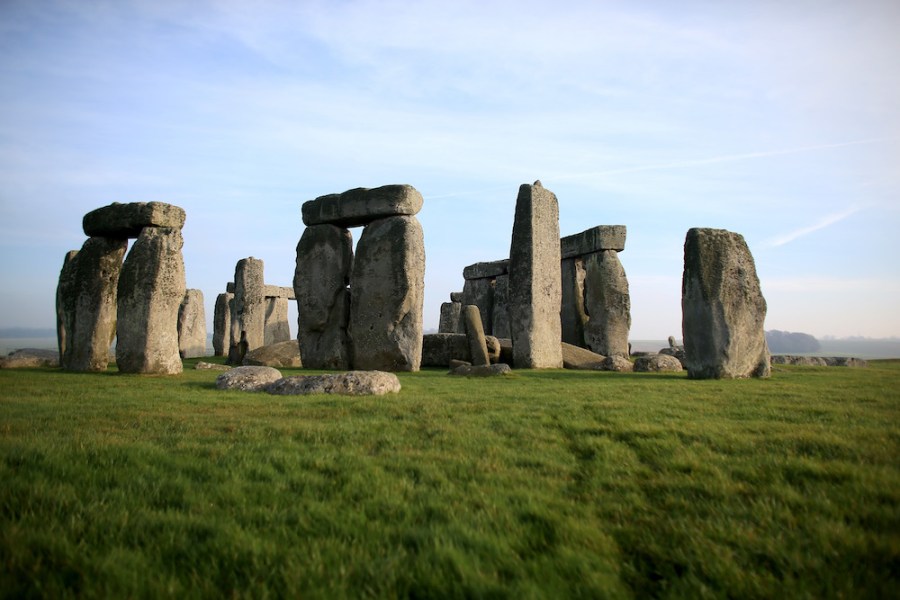Building a tunnel to carry an upgraded A303 road below the World Heritage Site south of Stonehenge has caused heated debate. Much of it has been fuelled by negative publicity and misunderstandings about the processes by which archaeological concerns feed into planning and delivering development. But I want to offer a rather different perspective, and argue that this is the most ambitious conservation project ever undertaken to protect and enhance Britain’s archaeological heritage.
The A303 runs for 92 miles between the M3 at Basingstoke and the A30 at Honiton, and was first designated as a trunk road in 1958. Eulogised in Tom Fort’s book The A303: Highway to the Sun (2012), it is a route taken by many holiday-makers and festival-goers travelling to the West Country as well as by much heavy commercial traffic. Upgrading the route from a standard two-way highway to a dual carriageway began in piecemeal fashion during the 1960s, but the route has never been adequate for the volume of traffic; bottlenecks still cause traffic jams on a regular basis.
When the newly formed English Heritage launched its Stonehenge Conservation and Management Project in 1984, one of its three key objectives involved working with the Department of Transport on a sensitive upgrade of the A303 as it passed Stonehenge. The other objectives, relocating and improving the visitor centre, and closing and removing the A344 that ran right beside Stonehenge, have been achieved successfully. If evidence for the value of sorting out the A303 is needed then reflecting on the improved ambience brought about by closing the A344 should be proof enough. Directing the A303 underground effectively takes it out of the landscape; the project is not so much about building a road as taking one away.
The A303 as it passes Stonehenge. Photo: Matt Cardy/Getty Images
A tunnel-based solution has a long history of development and refinement. It was first suggested by archaeoastronomer Richard Wort in 1984 as a way of ensuring that the winter solstice sunset could be observed from Stonehenge unhindered by the modern traffic. Since then, tunnel-building technology has improved, the length of the tunnel has grown and the many environmental and archaeological benefits are better understood. The current scheme originated in 2014; when it was opened for public consultation, many archaeologists argued that the proposed 2.1km tunnel was too short and that doing the job properly required a tunnel of at least 3km. This advice was taken on board, and the scheme approved by the government in November 2020 includes a tunnel of 3.3km together with a series of ‘green bridges’ further west to better facilitate movement across the landscape for people and wildlife.
Archaeological considerations have been included at every stage in planning the A303 upgrade between Amesbury and Berwick Down. Numerous alternative routes have been explored. The most experienced archaeological contractors and consultants in the country have been working with many other professionals to achieve the best possible solution. A scientific committee of about 20 senior archaeologists with expertise in the Stonehenge landscape, chaired by Barry Cunliffe (emeritus professor of European archaeology at the University of Oxford), provides independent advice on heritage matters to the Highways England project team, and scrutinises proposals at every stage (although a member of that committee, I am writing here in a personal capacity). State-of-the-art approaches have been used for the detection and recording of archaeological sites and deposits, and well-established protocols for archaeological management have been closely followed.
This last aspect is perhaps the least understood, and has undoubtedly caused some misunderstandings. Before work begins in any landscape, but especially sensitive areas such as those around Stonehenge, a series of steps is taken to gather detailed information that can be used in planning, engineering, and designing a development. Following guidance set out in the National Planning Policy Framework first published by the government in 2012, and revised several times since, this work is specified by archaeological officers in the relevant local planning authority. The briefs are then carried out by commercial archaeological companies at the cost of the developer, monitored by the planning authority. Work usually starts with desk-based assessments of existing knowledge before moving on to what is known as field evaluation when previous records are validated and areas with no existing records are thoroughly checked. Negative as well as positive evidence is collected so that the impact of proposals can be fully understood and, where necessary, schemes can be modified to minimise harm to archaeological deposits.
For the Stonehenge scheme, field evaluation was undertaken over a broad corridor using a wide range of techniques that included geophysical survey, test-pits, and evaluation trenches. Findings from this work, carried out in 2019, have been used to criticise the tunnel scheme in the press, most recently by Garry Shaw in an article for the Art Newspaper. But these criticisms miss the important point that discovering finds as part of the field evaluation informs the design process so that sites of archaeological importance can be avoided. That is exactly what has happened since, with small but important changes to the footprint of the scheme itself and the position and extent of enabling works. If the archaeologists involved have done their job then the overall impact of the scheme will be minimal. Certainly, the archaeological teams have made their best shot.
Tunnels as tools for conservation are nothing new. A tunnel beneath the Iron Age hillfort at Poundbury just outside Dorchester was an early example, built in 1857 by Isambard Kingdom Brunel after he was persuaded not to disfigure the site with a cutting to carry the Weymouth to Bristol railway. Going underground with the Stonehenge tunnel will remove an existing blot on the landscape, massively reduce air, noise, and light pollution at the monument, and allow visitors and wildlife to roam the Stonehenge landscape and better experience its delights.
Timothy Darvill is professor of archaeology at Bournemouth University.
